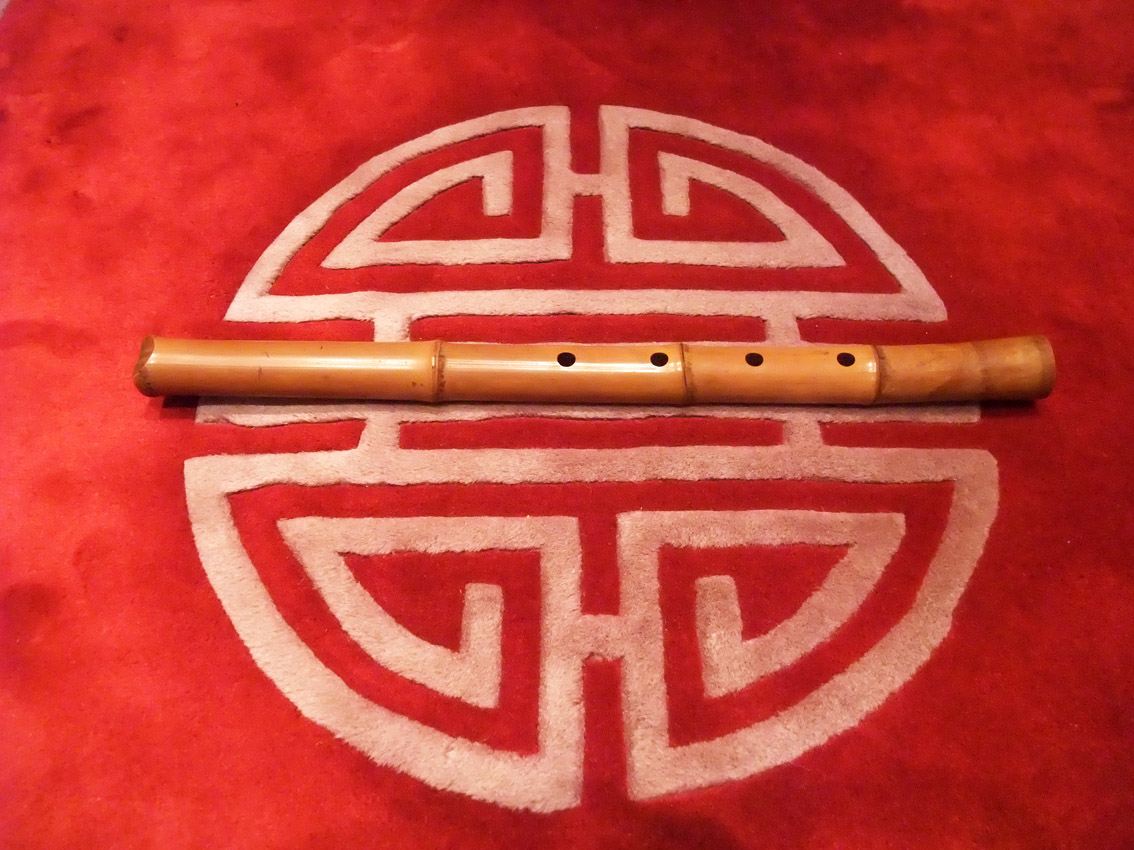Yamaue Getsuzan was one of the foremost honkyoku experts of his generation. In terms of the scope and depth of his studies, he was unparallelled. Originally from Kyūshū, he traveled widely, being stationed in different areas of Japan for his work. He studied his native Kyūshū style since he was a child and gathered all the available pieces from the remaining teachers. Modern day Itchōken, a revival of the komusō Itchōken temple tradition, owe much of their lineage to him, him being one of the two main teachers of their founders. He was a master of Kimpū Ryū (Nezasa Ha), studying the complete repertoire of 10 pieces from 4 different teachers as well as 4 from one other teacher. His main teacher for this lineage was Oritō Nyogetsu, from whom he also studied the ura-choshi pieces. Yamaue passed this lineage on to two people, Satō Reidō and Isō Jōzan.
From a young age Yamaue studied Shimpō Ryū from two of Katsuura Shōzan’s students, and later went to study directly under Katsuura. Though a number of Shimpō Ryū pieces survive in varying forms absorbed by other schools, Yamaue’s transmission remains the key source of original Shimpō Ryū honkyoku. He passed this lineage to two people, Satō Reidō and Takahashi Rochiku.
Yamaue made extensive studies of Ōshū Kei, Taizan Ryū (from Tanikita Muchiku), Kinko Ryū from a number of teachers, and various other pieces. He kept great care in preserving the subtle differences between regional techniques and styles, and passed on even slightly different transmissions of the same pieces, detailing the particular styles of the individuals from whom he learned.
He also did great work in researching and documenting the lines of transmission for the various regional styles. This work has been particularly important for shakuhachi researchers such as the late Tsukitani Tsuneko for example, who have relied on Yamaue’s lineage charts to trace the history of transmission of various honkyoku. Whereas some formal shakuhachi schools’ lineages have been documented elsewhere, these generally document only each person’s main teacher, or at times not even their actual main teacher but the teacher who is wished to be publicly presented as their main teacher. Since many teachers have learned from multiple sources, this leaves much unsaid and knowing where each piece in their repertoire came from often remains a mystery. For this reason, Yamaue’s charts are invaluable, showing the many teachers of each person, and detailing the specific styles, and at times even the specific pieces, that they learned from each source.
Although Yamaue was highly regarded as a foremost honkyoku expert, due to living in the remote countryside of Kyūshū few people had the opportunity of studing from him. His two main students were Iso Jōzan, who lives in the revival movement Itchōken temple in Hakata, and Satō Reidō in Nagasaki.
Yamaue’s principle student and the only one to receive the entirety of his lineage was Satō Reidō. Since the passing of Satō Reidō, his lineage is continued today by Ōtsubo Shidō.
Since 2010 Justin has been authorised to teach Yamaue Getsuzan’s lineage by Ōtsubo Shidō, and has been given the blessing also of Satō Reidō’s family. In particular Ōtsubo Shidō has expressed to Justin the importance of teaching Shimpō Ryū, and to teach it in the original Shimpō Ryū form of notation, since this transmission is available nowhere else in the world now.
In 2013, requesting him to continue and spread out this precious lineage, Ōtsubo presented Justin with a very rare shakuhachi made by Yamaue himself. This shakuhachi was one of three, presented by Yamaue to Satō Reidō and two of his students at a time when Yamaue used to come regularly to teach in Satō’s lesson room. It is a beautiful 2 shaku 1 sun jinashi, with an exquisite gentle sound. It bears the stamp “普化明暗月山”, “Fuke Myoan Getsuzan”.


